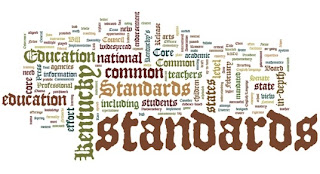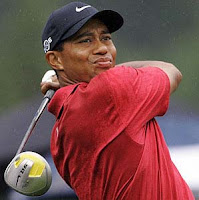Teaching
Dissonance
- Balancing informational text with literature
- Building knowledge in the disciplines
- Staircase of complexity of text in the classroom
- Text-based answers
- Writing from sources
- Academic vocabulary
A High Octane Year
Forgiveness for Going off the Diet
Have you ever noticed how appealing everything looks on a holiday table? The turkey, cooked to a beautiful golden brown, sits as a centerpiece of perfection. The green beans with a hint of garlic and balsamic are served on a silver platter. The breads are placed in lovely woven baskets lined with a festive towel. There is cranberry sauce and mashed potatoes and squash and every dish looks more appetizing than the next. Eagerly we fill our plates with a little of everything and when we sit down, we glance at the plate. It seems a bit full, slightly daunting. But we don’t care. It’s the holidays. On the holidays, we feast.
Afterwards, we unbutton our pants and begin to feel a little remorse. It all looked so good on the table, but when the table is cleared, we take Zantac and promise to start the diet again tomorrow.
As I meet and talk with teachers about better reading and writing instruction, I realize that balanced literacy is perceived a lot like the holiday feast. Mini lessons. Guided reading. Shared reading. Choral reading. Reading conferences. Read aloud. Strategy Groups. Word Study. Interactive writing. You name it. It’s all beautifully packaged and presented at conferences, workshops, faculty meetings, and books by renowned and respected experts. As educators, we take bits and pieces of these ideas and put them on our teaching plate and attempt to clean up every morsel. However, at the end of the teaching day, we are often left with something akin to the indigestion we feel at the end of the feast, only now, we don’t have a fasting plan that will restore us to our previous level of comfort in a relatively short amount of time. The dissonance creates feelings of exasperation and worse, inadequacy. We wonder, how is this all do-able?
I have met countless teachers ready to throw in the towel and quit balanced literacy. They are ready to go back to the basal and traditional reading groups and when this happens, I remind them that nobody gets it all right on the first day out. Even Vincent Van Gogh, master painter, said, “I am always doing what I cannot do yet, in order to learn how to do it.” And that’s what we have to do, too. Yes, it is true, the people selling balanced literacy present it on silver platters, but that is only because they have had lots of time to practice serving it up on paper plates. Like Van Gogh, they kept at it. They sought out whatever information they could: they read, they planned, they practiced, and they talked to whoever they could about it.
Contrary to how it may feel at times, balanced literacy is not a feast. It is the meant to be a steady diet of solid reading and writing instruction. And like any good diet, it needs to be learned in moderation with the knowledge that from time to time, we’ll mess up. When that happens, we call it a day, and start new tomorrow, knowing that it won’t be long before we, too, will be ready for the fine china.
Better than the Best
In the book Switch: How to Change Things When Change Is Hard (Amazon Affiliate Link), Chip and Dan Heath share a story about pro golfer Tiger Woods. As they tell it, eight championships into his career, Tiger Woods decided that his swing needed an overhaul. For the typical lay person or spectator, it’s hard to imagine that Tiger had anything to improve, let alone the swing that had earned him countless trophies and prizes. One might ask, if something is working, why change it?
As a teacher, I think about this question a lot. Do we really need to change things that are working? I think the answer is no, we don’t need to change them. What we need to do, however, is think about them. If we aim to duplicate or amplify our successes, we need to ask why. Why does what we are doing work? And then we need to ask what. What can I do to make this better?
When Tiger Woods set out to improve his swing, I don’t believe that what motivated him was a notion that he was swinging the club wrong or badly—he simply believed that he could do it better. At the top of his game, Tiger positioned himself as a learner. Since then, he has gone on to win over thirty-five more championships and titles. Why? Because he wanted to be better than the best.
From time to time, we all need a little push to rethink our best practices. Today I am asking you to think about what you are doing that works. Why does it work? What can you do to make this better?
The Importance of Talk and Collaboration
The Jedi Master Speaks: Try Not, Do or Do Not
This past spring, many of my study group colleagues attended a workshop led by the sisters, Gail Boushey and Joan Moser. They returned invigorated and validated and inspired. They found themselves thinking about September and what they would do differently to prepare for a year of solid literacy instruction.
At this particular workshop, the sisters shared videos of their classrooms and talked in-depth about their space and how it supports effective literacy learning. My colleagues were intrigued by their ideas, especially the notion of a classroom where not every student has his or her own desk. They wondered out loud about what this would be like, how it would change the dynamic of the learning, and what the ramifications of making changes in their own classroom environments might be.
Eager for change, several of my colleagues returned to their schools to look at their space with fresh eyes. Should they exchange their desks for a few tables strategically placed around the room? They wrestled with the idea of having more students than desks. Would that work during content area instruction? Would there be fallout with parents or the principal? Where would students keep their things?
Were they sure they wanted to do this?
Where once they were jazzed up and excited to go back and make radical changes, now they weren’t sure they wanted to change at all. They faced a common conundrum: I want to do it differently, but I don’t feel comfortable.
Facing change is a theme that surfaces regularly in my life. I have seen change brought about by necessity to yield glorious and grand results. I have witnessed forced changes bring about unexpected consequences. But in each instance, it seems that change is always accompanied by fear. Sometimes that fear is debilitating, slowing innovation to a turtle’s pace or worse, bringing it to a complete halt. And sometimes fear is what invigorates, making the change positive and successful.
As you begin this school year, think carefully about the things you want change. Will you organize your space differently? Will you form a study group with colleagues so that you can become more schooled at the art of teaching? Will you approach your principal about the newest and best idea that you read about this summer?
No matter what change you’d like to make, do not forget that it is normal to feel afraid when embarking on a new journey and when in doubt, we should all return to the words of the great Jedi master, Yoda:
“Try not, do or do not.”
I intend this to be my year of great change and I wish you all the same. Don’t let your fear of change stop you. Just do it.
Poem for the Beginning of the School Year
There’s no more avoiding or denying it. It’s back-to-school season. It is my sincere hope that everybody has the most amazing year ever and as you begin, I’d like to share with you a poem that I wrote last year after attending my son’s first grade poetry celebration.
I hope you all have a fantastic year molding writers, readers, mathematicians, scientists, students, and most of all LEARNERS!






